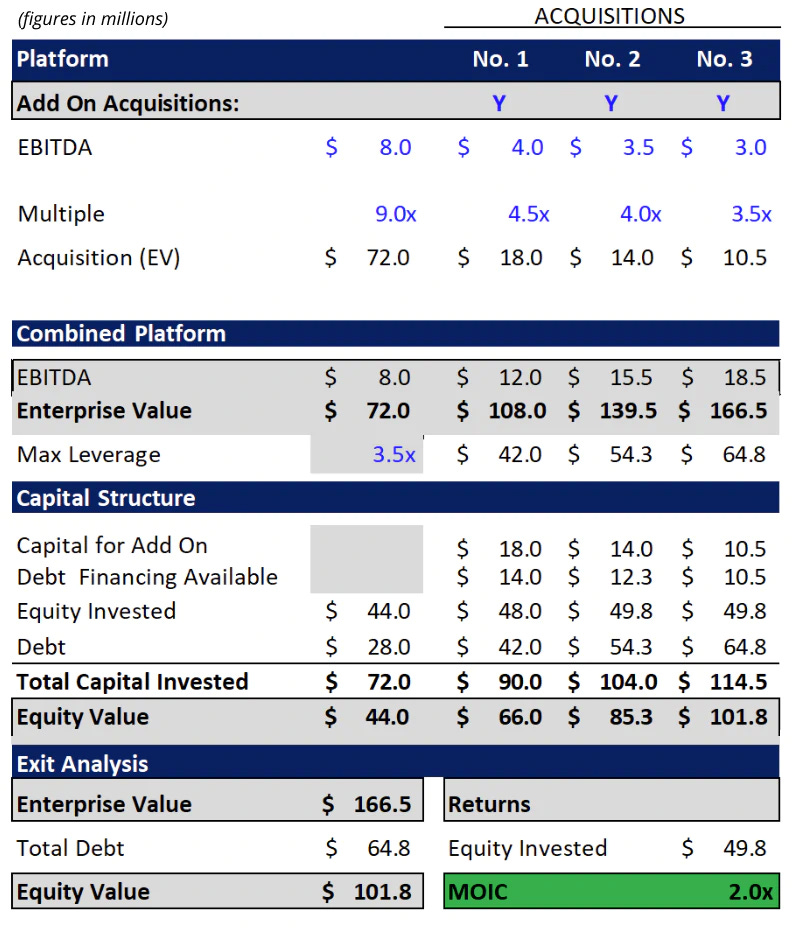Understanding the Power of Lower-Middle Market Private Equity
Where Small Business Meets Big Opportunity
The landscape of private equity investment presents numerous opportunities, but perhaps none as compelling as the Lower-Middle Market Private Equity (LMMPE) sector. This segment represents a sweet spot in the investment world, targeting enterprises with annual revenues ranging from $1 - $40 million – a category that encompasses an astounding 99.9% of American businesses.
The Vast Universe of LMMPE Opportunities
According to Small Business Administration statistics, approximately 33 million businesses fall within the LMMPE target range. This expansive opportunity set gives LMMPE funds a distinct advantage over their larger counterparts. While billion-dollar private equity firms must focus on a limited number of large acquisitions – typically 10-20 per fund – due to operational constraints, LMMPE managers can explore a vastly larger pool of potential investments.
Strategic Growth Through Acquisition
One of the most potent strategies in the LMMPE playbook is growth through strategic acquisitions. Fund managers typically begin by identifying and securing a "platform" company – a foundational investment that serves as a springboard for future growth. From this base, they pursue carefully selected add-on acquisitions that complement the platform's existing operations.
These add-on acquisitions often provide:
Complementary products or services that enhance the platform's offerings
Geographic expansion opportunities
Access to new technologies or market segments
Potential for multiple arbit
rage due to size differentials
Example of LMMPE add-on strategy:
The Multiple Arbitrage Advantage
LMMPE firms can create substantial value through multiple arbitrage – acquiring smaller companies at lower valuations and integrating them into larger platform businesses. This strategy can significantly enhance overall portfolio value, even before accounting for organic growth and operational improvements.
Operational Excellence: The Hidden Gem
Many LMMPE target companies have operated without institutional investment throughout their history. This presents a unique opportunity for value creation through:
Implementation of sophisticated financial controls
Optimization of capital structures
Introduction of professional management practices
Access to experienced operating partners and industry experts
The Growing Seller's Market
A significant demographic shift is creating unprecedented opportunities in the LMMPE space. Recent research from Wells Fargo reveals that 52% of families do not want to pass their family business down to their children. Additionally, a UBS survey found that 21% of business owners - most of whom generate $1 - $10 million in annual revenue - are actively considering private equity exits.
This trend is particularly favorable for LMMPE firms because these businesses often feature:
Limited previous institutional investment
Substantial room for operational improvements
Motivated sellers seeking liquidity
Strong potential for value creation
Flexible Exit Strategies
Unlike large-cap private equity firms, which often face limited exit options, LMMPE investments benefit from multiple potential exit paths. These can include:
Sales to strategic buyers
Acquisitions by larger private equity firms
Management buyouts
Strategic mergers This flexibility enhances negotiating leverage and potentially improves return outcomes.
The AI Opportunity in LMMPE
As artificial intelligence reshapes the business landscape, LMMPE firms are uniquely positioned to capitalize on this transformation. Small and medium-sized businesses increasingly recognize the necessity of AI integration but often lack internal capabilities. This creates compelling opportunities for LMMPE firms to:
Invest in IT service providers
Build platforms focused on AI implementation
Create value through technological transformation
Leverage fragmented market opportunities
Understanding the Risk Landscape
While LMMPE offers significant opportunities, investors should carefully consider several risk factors:
Limited liquidity typical of private equity investments
Impact of leverage and interest rate fluctuations
Higher volatility due to business size
Customer and supplier concentration risks
Operational execution challenges
Strategic Success in LMMPE
The key to successful LMMPE investing lies in thorough manager selection and strategy evaluation. Essential factors include:
Proven experience in the lower-middle market
Clear investment strategy and execution capability
Strong network of financing relationships
Demonstrated operational improvement expertise
LMMPE continues to offer compelling return potential, particularly for investors who understand the unique dynamics of this market segment. Success requires careful manager selection, thorough due diligence, and a clear understanding of both opportunities and risks in this dynamic investment space.




